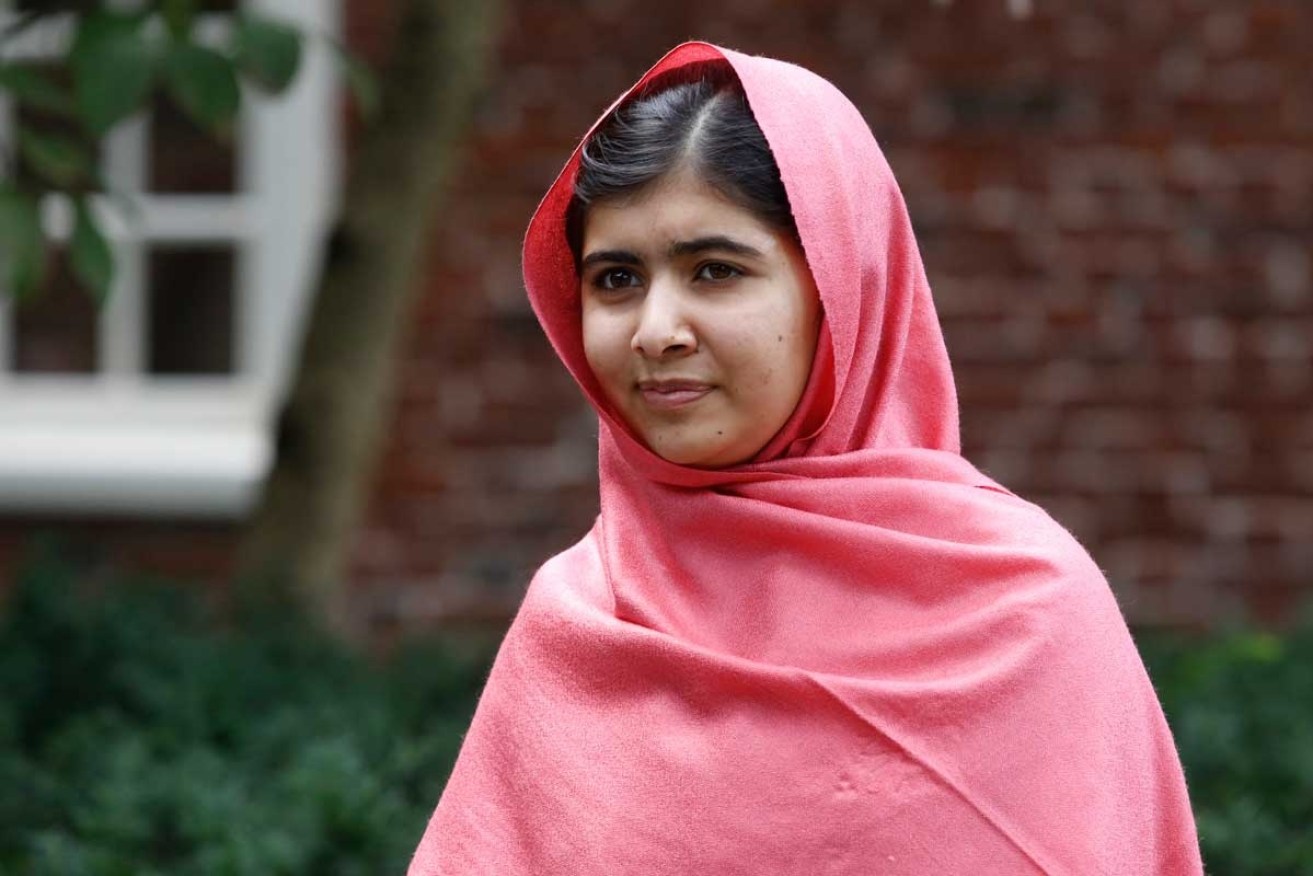Child rights activists win Nobel Peace prize

Pakistani teenager Malala Yousafzai, who was shot in the head by the Taliban in 2012 for advocating girls’ right to education, has been awarded the 2014 Nobel Peace Prize.
With the prize, Yousafzai, 17, becomes the youngest Nobel Prize winner, eclipsing Australian-born British scientist Lawrence Bragg, who was 25 when he shared the Physics Prize with his father in 1915.
Yousafzai was awarded the prize jointly with Indian children’s right activist Kailash Satyarthi.
The Norwegian Nobel Committee said the pair were awarded the prize for their struggle against the suppression of children and young people.
• US warns Ebola could become the next AIDS
• The Aussie granny that could get you fit and healthy
“The Nobel Committee regards it as an important point for a Hindu and a Muslim, an Indian and a Pakistani, to join in a common struggle for education and against extremism,” committee head Thorbjoern Jagland said.
“It has been calculated that there are 168 million child labourers around the world today.
“In 2000 the figure was 78 million higher. The world has come closer to the goal of eliminating child labour.”
Yousafzai was recognised for fighting for years for the right of girls to education, showing by example that children can contribute to improving their own situations.
“This she has done under the most dangerous circumstances,” the committee said.

Malala Yousafzai being treated in a Birmingham hospital after her shooting. Photo: AAP
“Through her heroic struggle she has become a leading spokesperson for girls’ rights to education.”
It also said that the prize recognised the work by Satyarthi to head various forms of protests and demonstrations, all peaceful, focusing on the grave exploitation of children for financial gain.
“Children must go to school and not be financially exploited,” the committee said.
“In conflict-ridden areas in particular, the violation of children leads to the continuation of violence from generation to generation.”
“Pride of Pakistan”
Yousafzai was at school in the city of Birmingham in central England when she was told she had won the Nobel Peace Prize, according to a spokeswoman.
“Malala is at school as normal today,” she said, adding that the 17-year-old would hold a press conference later on Friday.
Yousafzai attends Edgbaston High School, a private school in an upmarket part of Birmingham.
After being shot by the Taliban in October 2012, she was treated at a hospital in Birmingham.
She started at the school in the city in March last year.
In Islamabad, Pakistan’s Prime Minister Nawaz Sharif congratulated Yousafzai on winning the prize.
“She is (the) pride of Pakistan. She has made her countrymen proud. Her achievement is unparalleled and unequalled. Girls and boys of the world should take the lead from her struggle and commitment,” he said in a statement.
Yousafzai has become a global icon for girls’ education and was nominated for the prize last year too.
No ordinary teen
Few teenagers can lay claim to a Nobel prize, or say they spent their 17th birthday lobbying Nigeria’s president to do more to free hundreds of girls kidnapped by Islamist militants.
But Malala Yousafzai is no ordinary teen.
She had already been in the public eye for years when a Taliban gunman boarded her school bus on October 9, 2012, asked “Who is Malala?”, and shot her in the head.
Her father Ziauddin, a school principal and himself a seasoned campaigner for education, helped propel the precociously talented girl from the Swat valley in northwest Pakistan into the limelight.
At his encouragement, Yousafzai started writing a blog for the BBC’s Urdu service under a pseudonym in 2009, aged just 11, about life under the Taliban in Swat, where they were banning girls’ education.
In 2007 the Islamist militants had taken over the area, which Yousafzai affectionately called “My Swat”, and imposed a brutal, bloody rule.
Opponents were murdered, people were publicly flogged for supposed breaches of sharia law, women were banned from going to market, and girls were stopped from going to school.
Her blog, written anonymously with the clarity and frankness of a child, opened a window for Pakistan onto the miseries being perpetrated within its borders.
But it was only after the shooting in 2012, and Yousafzai’s subsequent near-miraculous recovery in a British hospital, that she became a truly global figure.
Australian doctor misses out
Australian doctor Catherine Hamlin had been nominated for the award – for transforming the lives of more than 40,000 Ethiopian women suffering from obstetric fistula.
At age 90, Dr Hamlin’s nomination recognised the more than 55 years she has dedicated to curing and educating some of the most marginalised women in the world.
While obstetric fistula – a condition in which a hole between the vagina and rectum or bladder is caused by prolonged obstructed labour – continues to be an issue for women in Ethiopia and other developing countries, Dr Hamlin says it’s only a matter of time before it’s defeated.
“We won’t eradicate obstetric fistula in my life time, but we can in yours. The team of surgeons and midwives at our hospitals are expertly placed to continue my work well into the future,” Dr Hamlin said on Friday.
-AAP/ABC








